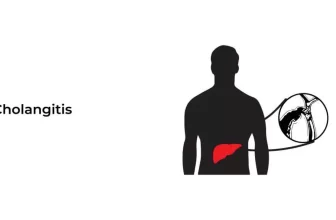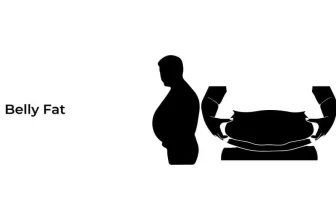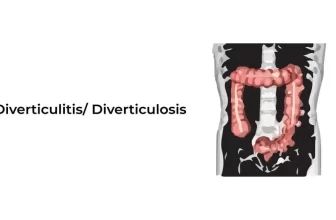Pneumonia begins with common symptoms like cold and flu that can worsen with spreading germs. The physician might refer to it as alveoli to inject with fluid that comes into effect when a virus affects the air sacs in an individual’s lungs. Pneumonia causes difficulty in breathing and prevents required oxygen from entering the blood flow. This illness can affect anyone from infants to the older population or people with a weak immune system.
Causes
Various infections can cause pneumonia; widespread bacteria and viruses are present in the air that we inhale. Mostly, an individual’s body avoids these viruses from tarnishing the human lungs. However, it can damage an individual’s immune system, even if it’s healthy.
Pneumonia is categorized according to the kinds of germs such as:
- Community-acquired pneumonia: It is the most popular kind of disease that arises outside of health care buildings. It can be affected by:
- Bacteria: This is the most popular reason for bacterial disease, which can happen on its own or after an individual encounters cold or flu and may affect one side of a lung.
- Bacteria-like organisms: Mycoplasma pneumonia can also cause pneumonia that relatively contains a normal indication of the illness than others. It is also referred to as walking pneumonia, which generally does not require bed rest.
- Fungi: This type of disease is extremely familiar to people with weak immune systems.
- Viruses: Viruses like cold and flu cause pneumonia. Coronavirus (COVID-19) might also cause pneumonia, which can be life-threatening.
- Hospital-acquired pneumonia: This is a type of disease that an individual can catch in the hospital. Usually, people on ventilators and using the oxygen machine have a greater risk of spreading this disease.
- Health care-acquired pneumonia: This is a bacterial illness that is similar to hospital-acquired pneumonia. It can be infected through long-term care facilities like kidney dialysis centers.
- Aspiration pneumonia: It happens when individual breaths, intakes food, drinks, vomits, or does saliva into her lungs.
Symptoms
The symptoms vary from person to person; it mainly affects infants, children, and the older population. It is difficult to distinguish between pneumonia and a typical cold.
- Symptoms in infants/ children:
- Cough: This disease develops green, yellow, and bloody mucus or pain while coughing.
- Fever: Fever may increase to a risky 105 degrees F.
- Loss of hunger: A little or no food intake might be caused by another symptom to reduce the appetite, like fever.
- High heartbeat rate: If the heartbeat exceeds the normal rate, it can be seen as a severe health indicator.
- Trouble in breathing: This disease affects the lungs and causes trouble breathing.
- Symptoms of pneumonia in adults and aged people:
- Cough: Discharge of a greenish yellowish or bloody mucus.
- Fever: Having a high temperature like 102-105 degrees F and shivering with chill.
- Shortness of breath: This disease affects the lungs and causes shortness of breath.
- Chest pain: A stabbing sensation can be felt while coughing.
When to see a doctor?
If the symptoms worsen, such as difficulty breathing and severe chest pain, one must rush to the doctor as these symptoms can not be handled easily. In children, if the fever remains at 104 degrees F and does not cool down, then it’s vital to visit the consultant as soon as possible. Similarly, the shortness of breath and cough with a unique discharge must not be taken lightly and requires immediate consultation with the physician.
Diagnosis
The physician might analyze the past fitness records and perform various tests according to the patient’s condition. The doctor would examine the patient’s lungs, heartbeat, and other suitable diagnosis measures. After the examination, the doctor might advise the patient to perform an X-ray to analyze the disease spread. The consultant can also use a pulse oximeter test to calculate the amount of oxygen in the body that reflects the lung’s performance. Similarly, he may advise laboratory tests of an individual’s blood or mucus to analyze the kind of illness, bacteria, virus, or fungi that caused pneumonia.
Treatments
The treatments vary from person to person, and the kind of disease, such as mild and severe. However, the disease treatment can include;
- Control fever: Medication can be used to control fever, such as aspirin and nonsteroidal anti-inflammatory drugs like NSAIDs, ibuprofen or naproxen, or acetaminophen.
- Hydration: Drinking a lot of fluids to assist in loosening secretions.
- Cough medicine: In disease, cough medicine can help prevent the cough and its associated pain.
- Drinking mild liquids: Having steamy baths and utilizing a humidifier enables one of the airways and lessens individual breathing. You must rush to the physician immediately if breathing gets awful rather getting improve over time.
- Taking rest: Rest can help in improving the overall health as this disease will damage the immune system.
- Avoiding smoke: Staying away from smoke can rebuild the lungs.
References
- https://www.mayoclinic.org/diseases-conditions/pneumonia/symptoms-causes/syc-20354204
- https://www.webmd.com/lung/understanding-pneumonia-basics
- https://my.clevelandclinic.org/health/diseases/4471-pneumonia
- https://www.lung.org/lung-health-diseases/lung-disease-lookup/pneumonia/symptoms-and-diagnosis
- https://www.cedars-sinai.org/health-library/diseases-and-conditions—pediatrics/p/pneumonia-in-children.html







